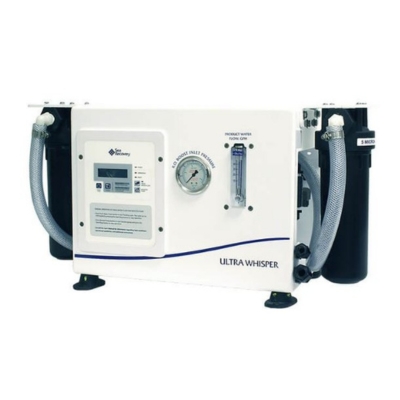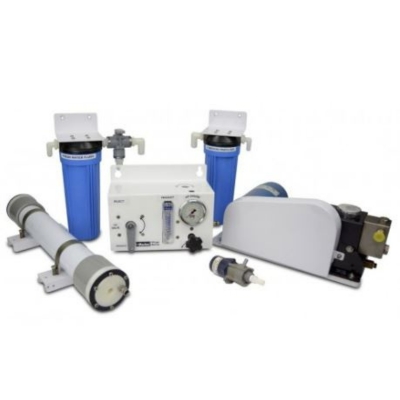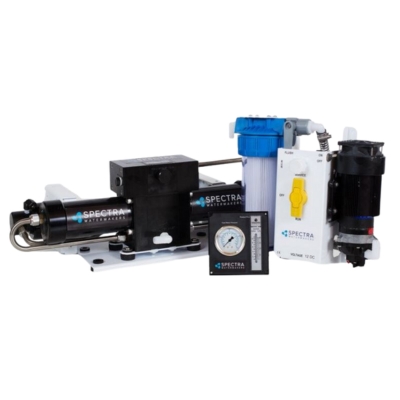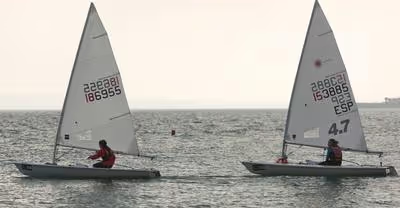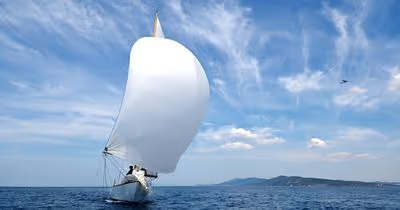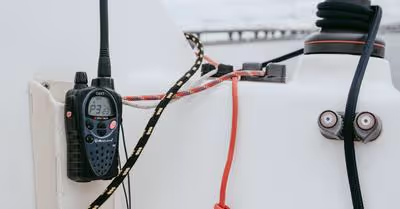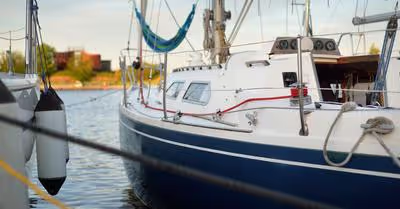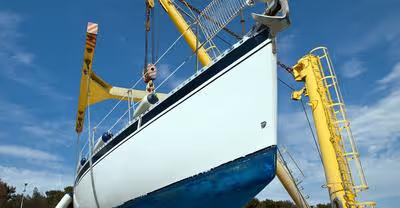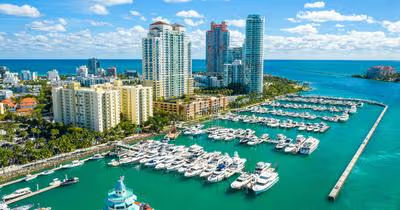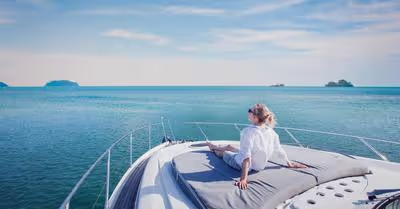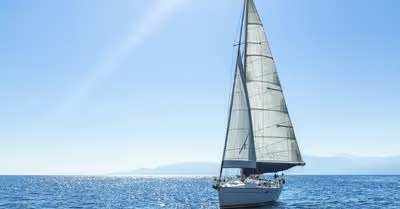Table of Contents
Best Watermakers for Sailboats – A Complete Guide
Trawlers, long-range boats, and yachts have seen a recent spike in interest in the marine business. It's reasonable that an off-grid,long-range, on-the-water life would be more enticing now than ever before. When preparing your boat for the long term, it's crucial to think about the most sustainable solutions, and having an appropriate supply of freshwater is sometimes disregarded. While most boats in this group have built-in freshwater tanks, the tank's capacity is often severely limited.
Let's have a look at some of the top watermakers now on the market.
The Whisper Ultra
Sea Recovery’s Ultra Whisper
Sea Recovery’s Ultra Whisper is by far one of the greatest watermakers currently available on the market, with limited electrical options that can work on either DC or AC. This watermaker is not only silent, but it also has an autonomous functioning that requires very little user intervention.
Since it can serve as an effective water supply, this watermaker is suitable for small powerboats and sailboats.When compared to other models, this model promises a 75 percent reduction in power use.
Pros
- Water output that is smooth and quiet
- Ideal for small vessels, it can produce up to 2,280 liters per day
- It conserves energy
Cons
- It might not be ideal for huge vessels
Watermaker by Echotec
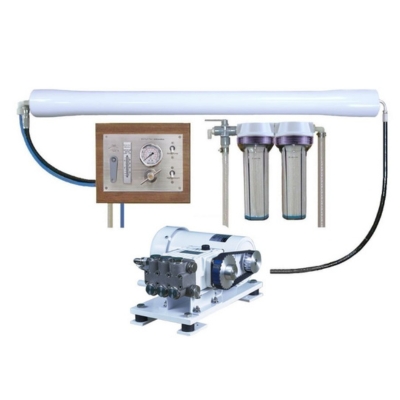
Watermaker by Echotec
Look no further than the Echotec if you want a watermaker that can create 60 liters per hour with no care other than changing the filters. This type is built for high reliability and simple customer installation.
This watermaker is constructed of high-quality components that can endure the severe sea environment, making it one of the most robust watermakers available. This is essentially a line of modular watermakers that range in power from 12-volt to 24-volt DC. They provide an energy economy, a computerized energy recovery system, and unwavering dependability to guarantee that you never go out of drinkable water while at sea.
Pros
- Low energy consumption
- Durable
- Cost-effective
Cons
- It has a very slow speed
- Not recommended for large vessels
PowerSurvivor Spectra Katadyn
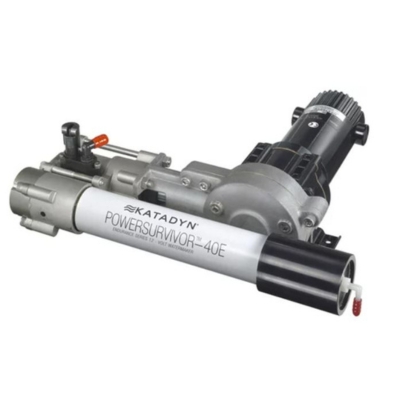
PowerSurvivor Spectra Katadyn
The Spectra Katadyn PowerSurvivor is likely the cheapest watermaker on the market as a compact and energy-efficient watermaker. We're talking about a desalination system for your sailboat that only uses 4 amps. It can create 1.5 gallons of clean drinking water each hour, which is a good yield for a small watermaker.
It's also one of the most mobile watermakers on the market. You have the option of installing it temporarily or permanently in case you need to move it. This portability is especially important if you're searching for a model that can fit into even the tiniest of spaces.
Its simple but tough design ensures that it can work well even in the harshest sea environments. When it comes to power, this is the only type on the market that can switch to a hand-operated mechanism or manual energy if there is a power outage.
Pros
- Lightweight and portable
- Rugged construction for use in hostile marine settings
- Effective and dependable
- If there is a power outage, you can switch to manual power
Cons
- Ideal for off-grid sailing
- The semipermeable membrane is quickly damaged by gasoline or diesel
Little Wonder Series by Village Marine
Little Wonder Series by Village Marine
The Village Marine Little Wonder Series has everything you need, whether you're searching for a watermaker for your little sailboat or a watermaker that can effectively serve those large boats. This type is designed for seasoned sailors seeking a variety of capacity options. This watermaker is only 69 pounds in weight, but it can produce approximately 180 gallons of fresh drinking water every day.
This type is one of the most efficient and cost-effective watermakers on the market, thanks to its high-pressure pump with low RPM. Not only that, but this watermaker has corrosion-resistant characteristics and is one of the most serviceable watermakers on the marketplace. It's dependable, quiet, and portable, which are all fantastic qualities in a watermaker.
Pros
- Simple to operate
- Corrosion-resistant
- Effective and dependable
- Simple to maintain
- Quiet and adaptable
Cons
- There are no automatic adjustment controls
Watermaker Ventura 150
Watermaker Ventura 150
This watermaker is one of the most multifunctional on the market. It has the ability to run on both electrical and renewable energy. This model is lightweight and energy-efficient, and its small and modular design makes it a fantastic choice if you need a watermaker that's simple to operate and install in tight areas.
The Ventura 150 watermaker is extremely efficient, producing over 6 gallons of water per hour, making it ideal for tiny boats. The controller on this yacht watermaker allows you to control and monitor the unit from afar. It also includes an auto-store feature that will flash the system every five days.
Despite its potential to create around 150 gallons of water each day, this watermaker is silent and surprisingly compact. It also allows you to choose between an automated manual and a manual model.
Pros
- Extremely adaptable
- It is possible to employ both electrical and renewable energy sources
- It is silent and smooth
- It is both small and light
Cons
- Analog controls are available on the manual model
Marine Watermakers: The Fundamentals
Reverse osmosis is used in marine watermakers to take in seawater and produce clean, drinkable water suited for any of your live-aboard demands. The newly created freshwater is then poured into your vessel's existing water tank, while the remaining "brine" is dumped overboard. The manner in which the water is pushed varies among most maritime watermakers. Typically, the water is either electrically propelled (AC or DC) or powered by the motor of your boat. The filtration procedure will be slower and the incoming seawater will be saltier and colder, so sailors may need a more powerful system than those fishing down in the Caribbean.Watermakers are available in a variety of shapes and sizes, with modular models best suited for smaller vessels because the sections may be "stashed" in any available extra cargo space.
With the appropriate Watermaker, the ocean may provide an almost limitless supply of fresh, clean drinking water to keep you hydrated on your offshore sailing adventures.When preparing for long-distance journeys, many sailors invest a lot of time and money on various aspects of the sailboat, including as the generators, electronics, engine, and sails.
While there's nothing wrong with that, they frequently forget one critical aspect of human survival: having enough fresh drinking water.Whether you have fresh water to drink in tanks on your yacht or plan to cruise in regions where clean drinking water is readily available, the annoyance of having to return to the dock to fill the water tanks might be overwhelming, which is exactly why you should look for the best watermakers for sailboats.
Watermakers, like many other navigational technologies, have progressed greatly in recent decades to become more efficient and reliable. Thus, they are no longer a luxury, but a necessity on the sailboat. Even better, watermakers have become reasonably priced and are designed to keep you hydrated when exploring locations without access to clean, fresh drinking water.
In this post, we'll look at how watermaker systems function, the benefits they provide, and the best sailboat watermakers currently available. You should be able to select the best watermaker for your yacht after reading this article.
To be honest, many sailors do not require the use of a watermaker. If you plan to sail near the coast, there's a good chance you'll be able to get fresh, clean water right off the dock. However, if you've always wanted to go off the grid and sail to far-flung corners of the globe, this can be a constraint.
A watermaker makes great sense to most seafarers with that in mind. During your cruise, you won't have to be worried about transporting tons of water for heating and drinking. You won't have to think of freshwater as a limited resource that must be conserved till the next port.You can easily cross the ocean without worrying about running out of water with a good watermaker.
A watermaker ensures a constant supply of fresh, clean water, keeping everyone hydrated and healthy. You may clean the water whenever you want, and all you have to do is remove the filter once in a while to keep it running smoothly. In essence, a watermaker is one of the most crucial pieces of sailboat equipment, thus having one installed is critical if you're a serious sailor.
Modern Marine Watermakers
To create pure, drinkable water from seawater, modern marine watermakers rely on the reverse-osmosis concept.Seawater is driven through a semi - permeable barrier that only permits freshwater molecules to flow through it, but not salt, germs, or any other organic substance, throughout this process. The newly purified fresh water is then piped into the sailboat's water tanks, with the remainder (brine) being thrown overboard.
Even though the sort of pump used and how it is powered varies amongst maritime watermakers, this is one of the most crucial aspects in any watermaker. Water can be pumped electrically or straight from the boat's motor in most circumstances. If your yacht has an AC generator or alternator, using the AC output to run the watermaker directly makes a lot of sense.
If you use renewable energy sources such as solar or wind, you can opt for DC-powered devices. You can also use AC-powered watermakers, but you'll need to purchase an inverter.
Overall, DC-powered watermakers are more effective than AC-powered watermakers because they have a power-saving energy recovery technology (ERS). However, keep in mind that if you're sailing in colder and saltier places, your energy usage may be fairly significant. This is because the water filtration procedure in certain places may be a little slower. As a result, if you expect to sail in colder, saltier places, you should make investments in a higher-powered watermaker system than if you plan to sail in warmer, less salty areas.
In case of a motor-driven watermaker, the high-pressure pump should be mounted on the motor so that it can be belt-driven with an automated clutch. If you need a significant amount of drinkable fresh water, a motor-driven watermaker should be your primary choice. This is more efficient than watermakers that are powered by AC or DC. This arrangement has an automatic controller that continuously pumps the water, despite the little engine. Engine-driven watermakers are great for reducing your energy consumption in this regard. When compared to traditional AC or DC-powered watermaker systems, an engine-driven watermaker can save up to 80% on energy consumption.
How to Select the Best Watermaker for Sailboats
When looking for the best watermakers for your yacht, there are numerous aspects to consider. The following are the most crucial factors to consider.
Your Freshwater Requirements
One of the most crucial factors to consider when purchasing a watermaker is your freshwater requirements. How much would be sufficient to keep you going on your sailing adventure? While the amount may vary from one sailor to the next or from one boat to the next, you should think about how many gallons a specific watermaker can create every day. This will assist you in selecting the best watermaker for you; one that will ensure you never run out of water.
Do not misjudge your water requirements, particularly if you plan to sail with children or stay on the boat for an incredibly long time.
Space
Is there enough room on your boat to lodge the sort of watermaker you want to buy? While most watermakers are designed to fit into the tiniest of spaces, you need to evaluate the authentic size of the watermaker to see if you have enough space on your vessel to install it.
Power
Watermakers can be powered by electricity, renewable energy sources like wind and solar (if available), or a combination of the two. When searching for the ideal watermaker, think about how it will be powered and whether or not it will consume little energy, which is a terrific feature. Again, there are engine-driven watermakers, so it's crucial to know exactly what you want.
Maintenance
Watermakers have a bad record for being tough to keep up with. Since components and equipment have improved in recent years, you should choose a model that is simple to maintain. You should utilize the watermaker in attractive water bodies.You should resist using the watermaker in polluted harbors because you may have to replace the filters frequently or perhaps damage the watermaker.
Recent Articles



